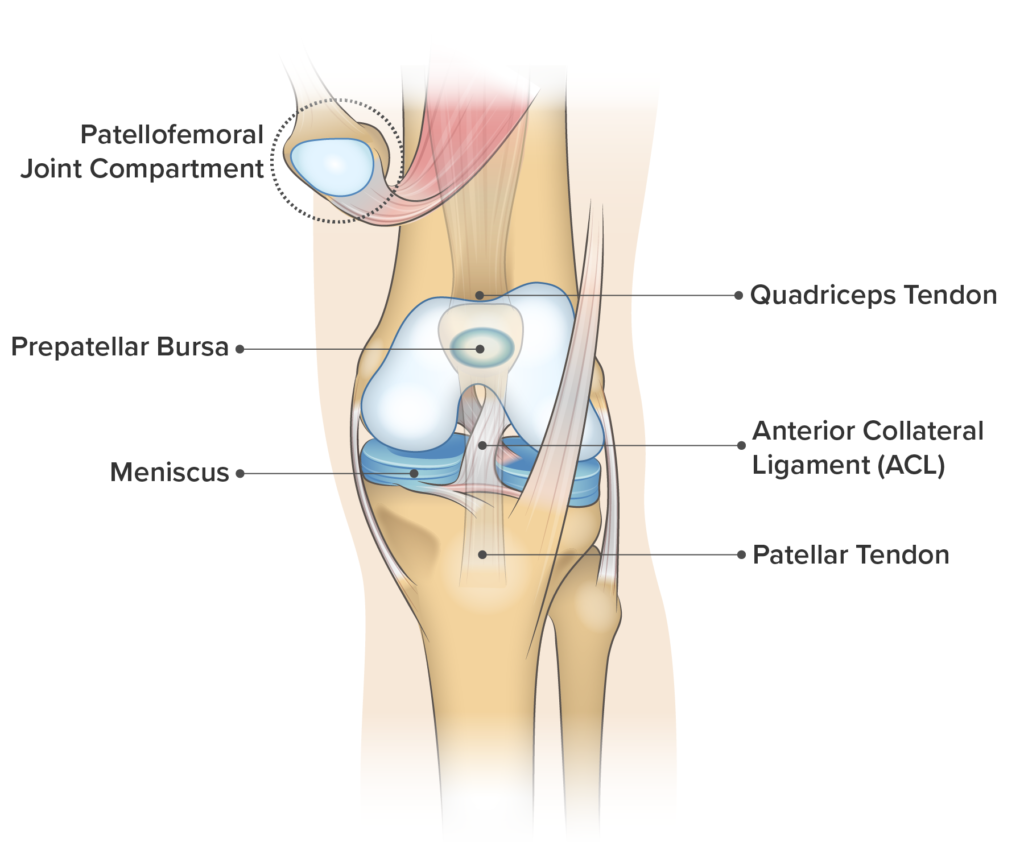Chondromalacia Patella
What is Chondromalacia Patella?
Chondromalacia Patella, also known as runner’s knee, is a condition characterized by the softening and degeneration of the cartilage on the underside of the kneecap. This cartilage, called the patellar cartilage, serves as a cushion between the thigh bone (femur) and the kneecap (patella). When it becomes damaged or wears down, it can lead to pain and discomfort during activities that involve bending or straightening the knee.
Causes
Several factors contribute to the development of chondromalacia patella. These include:
- Muscle Imbalance: Weakness or imbalance in the thigh muscles, particularly the quadriceps and hamstrings, can lead to abnormal patellar tracking.
- Overuse and Overloading: Repetitive stress on the knee joint, such as excessive running, jumping, or squatting, can contribute to the onset of chondromalacia patella.
- Trauma: Direct trauma or injury to the kneecap can cause damage to the cartilage, making it more susceptible to chondromalacia.
- Structural Abnormalities: Certain anatomical factors, such as flat feet, high-arched feet, or an abnormal alignment of the lower extremities, can increase the risk of developing chondromalacia patella.
Symptoms
The symptoms of chondromalacia patella can vary in severity, ranging from mild discomfort to significant pain. Common symptoms include:
- Knee Pain: The most noticeable symptom is pain around or beneath the kneecap, which is often aggravated by activities that involve bending the knee, climbing stairs, or sitting for prolonged periods.
- Crepitus: A grinding or popping sensation may be experienced when bending or straightening the knee.
- Swelling: In some cases, the affected knee may become swollen and tender to the touch.
- Weakness and Instability: Muscle weakness or a feeling of instability in the knee joint may be present, leading to difficulty with certain movements.

Call Our Office
(912) 999-6885
Office Location
9100 White Bluff Road, Suite 102
Savannah, GA 31406
Book An Appointment
Click Here To Book An Appointment
Chondromalacia patella, or runner’s knee, can be a source of significant discomfort and limitations. Identifying the causes and symptoms of this condition is crucial for accurate diagnosis and appropriate treatment. If you are experiencing knee pain or suspect chondromalacia patella, it is advisable to consult with a Carpal Tunnel Specialist who specializes in orthopedics and can provide comprehensive care to address your individual needs. With the right treatment plan, most individuals can overcome chondromalacia patella and return to an active, pain-free lifestyle.
Treatments
Treatment for Chondromalacia Patella focuses on relieving pain, reducing inflammation, and promoting healing. Here are some common treatment options:
Potential at-home remedies:
NSAIDs
Nonsteroidal anti-inflammatory drugs, such as ibuprofen, can be used to manage pain and reduce inflammation.
Orthotics and Bracing
Using shoe inserts (orthotics) or knee braces can provide support and help correct biomechanical abnormalities.
Rest and Activity Modification
Avoiding activities that aggravate the condition and allowing the knee to rest can facilitate the healing process.
Chondromalacia Patella Specialist’s interventions:
Surgical Intervention
In severe cases where conservative treatments have not provided relief, surgical options like arthroscopy may be considered to address any structural abnormalities or repair damaged cartilage.
Physical Therapy
A tailored exercise program designed to strengthen the quadriceps and hamstrings can help improve patellar alignment and alleviate symptoms.
